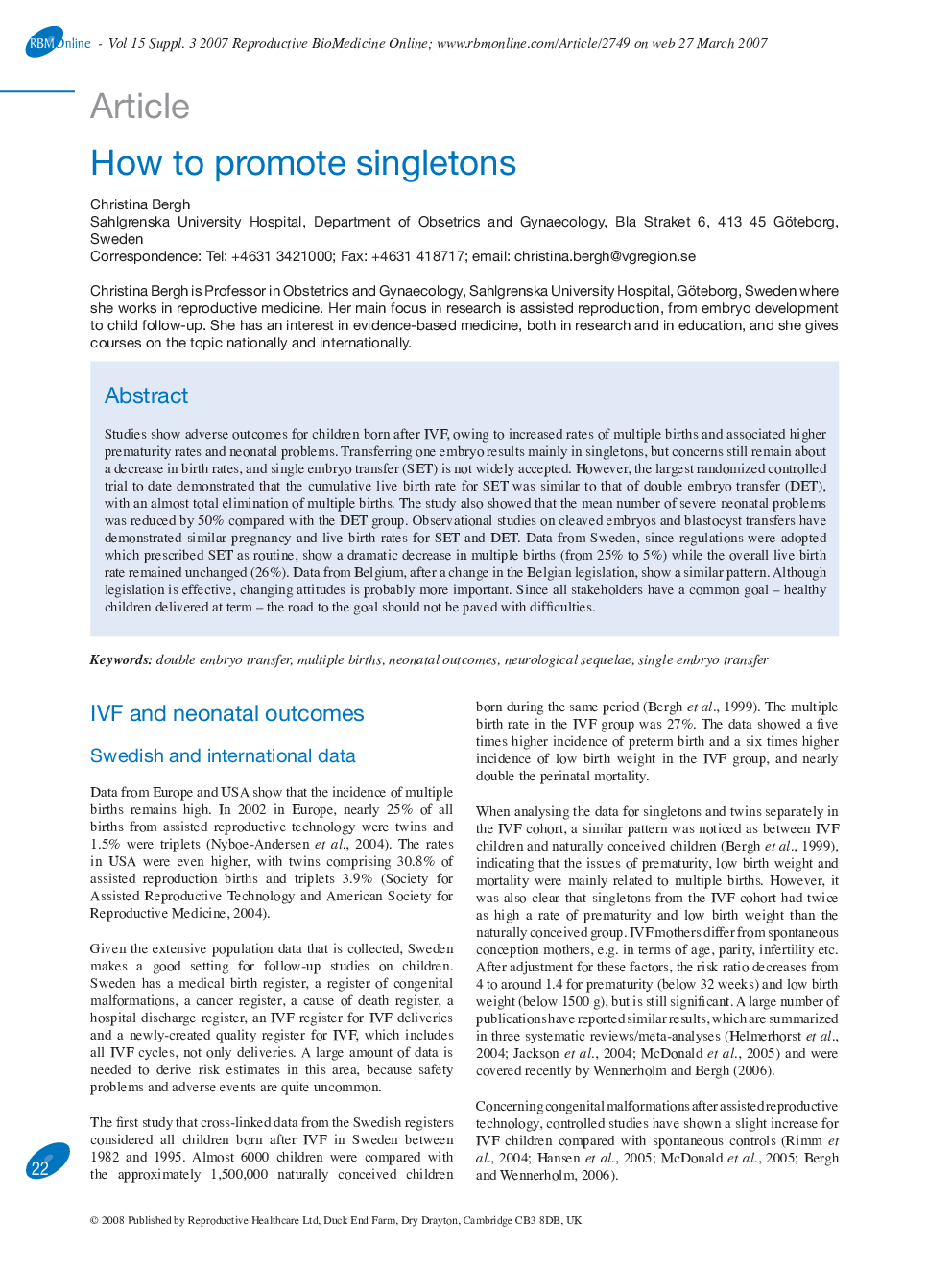| Article ID | Journal | Published Year | Pages | File Type |
|---|---|---|---|---|
| 3972792 | Reproductive BioMedicine Online | 2007 | 6 Pages |
Studies show adverse outcomes for children born after IVF, owing to increased rates of multiple births and associated higher prematurity rates and neonatal problems. Transferring one embryo results mainly in singletons, but concerns still remain about a decrease in birth rates, and single embryo transfer (SET) is not widely accepted. However, the largest randomized controlled trial to date demonstrated that the cumulative live birth rate for SET was similar to that of double embryo transfer (DET), with an almost total elimination of multiple births. The study also showed that the mean number of severe neonatal problems was reduced by 50% compared with the DET group. Observational studies on cleaved embryos and blastocyst transfers have demonstrated similar pregnancy and live birth rates for SET and DET. Data from Sweden, since regulations were adopted which prescribed SET as routine, show a dramatic decrease in multiple births (from 25% to 5%) while the overall live birth rate remained unchanged (26%). Data from Belgium, after a change in the Belgian legislation, show a similar pattern. Although legislation is effective, changing attitudes is probably more important. Since all stakeholders have a common goal – healthy children delivered at term – the road to the goal should not be paved with difficulties.
